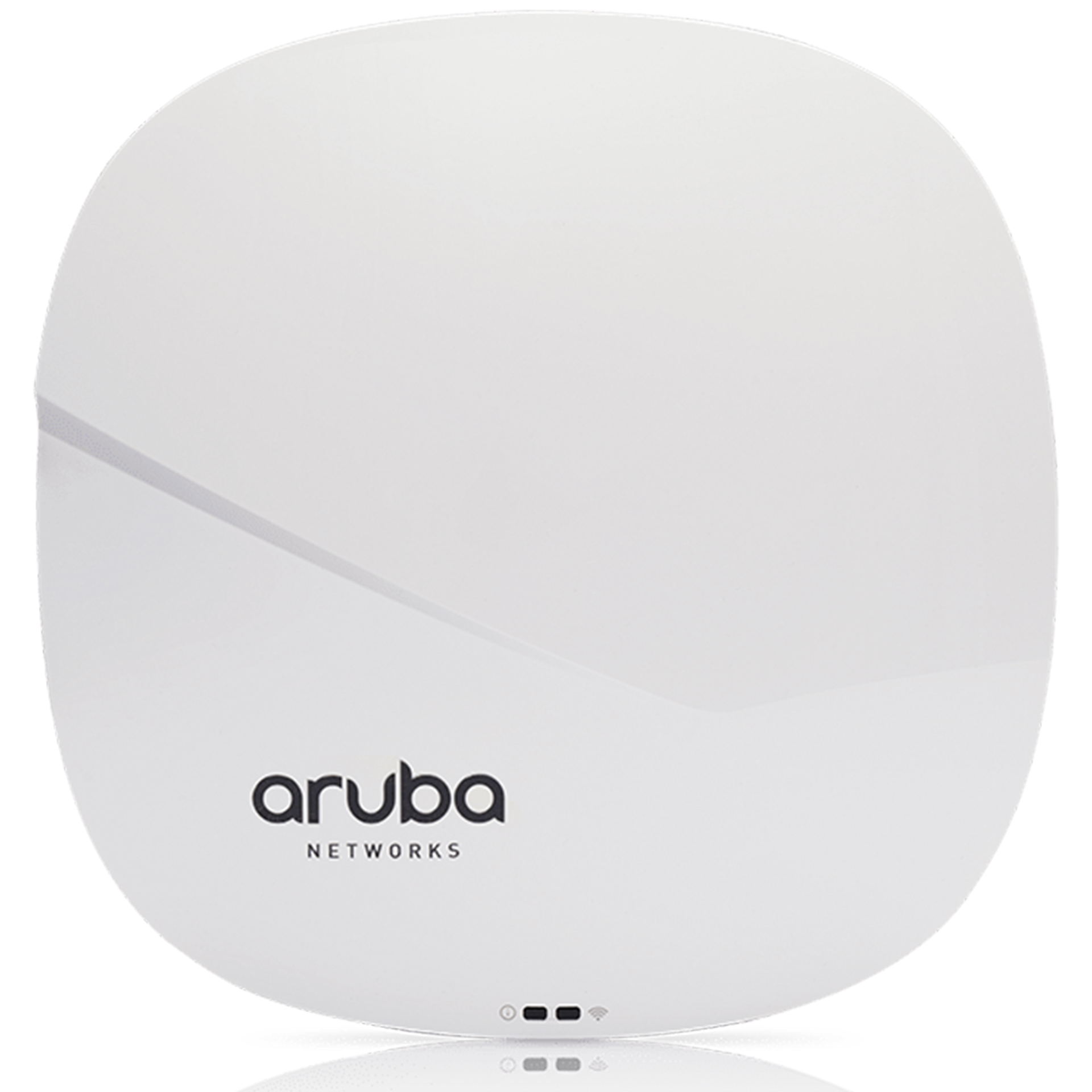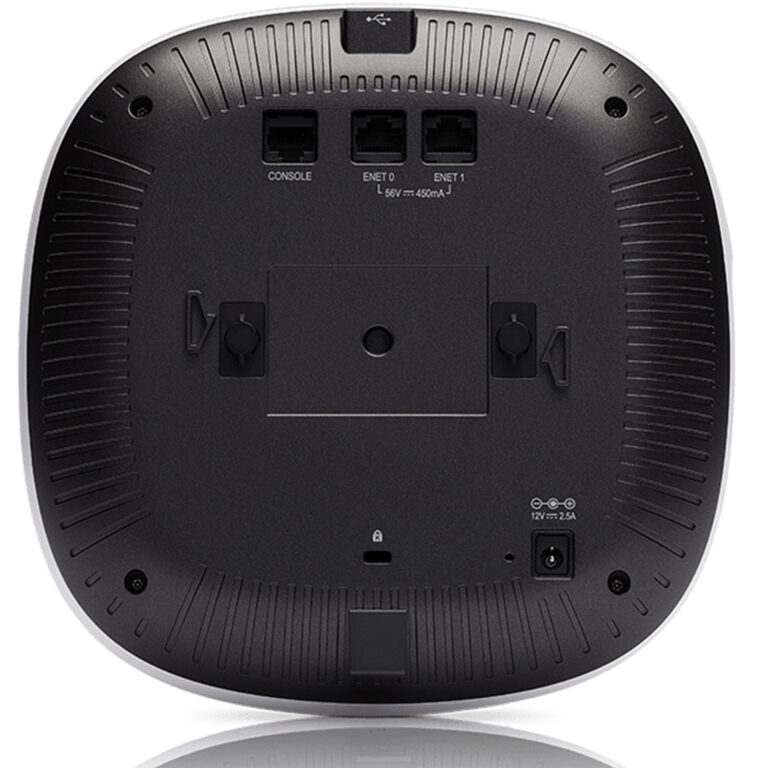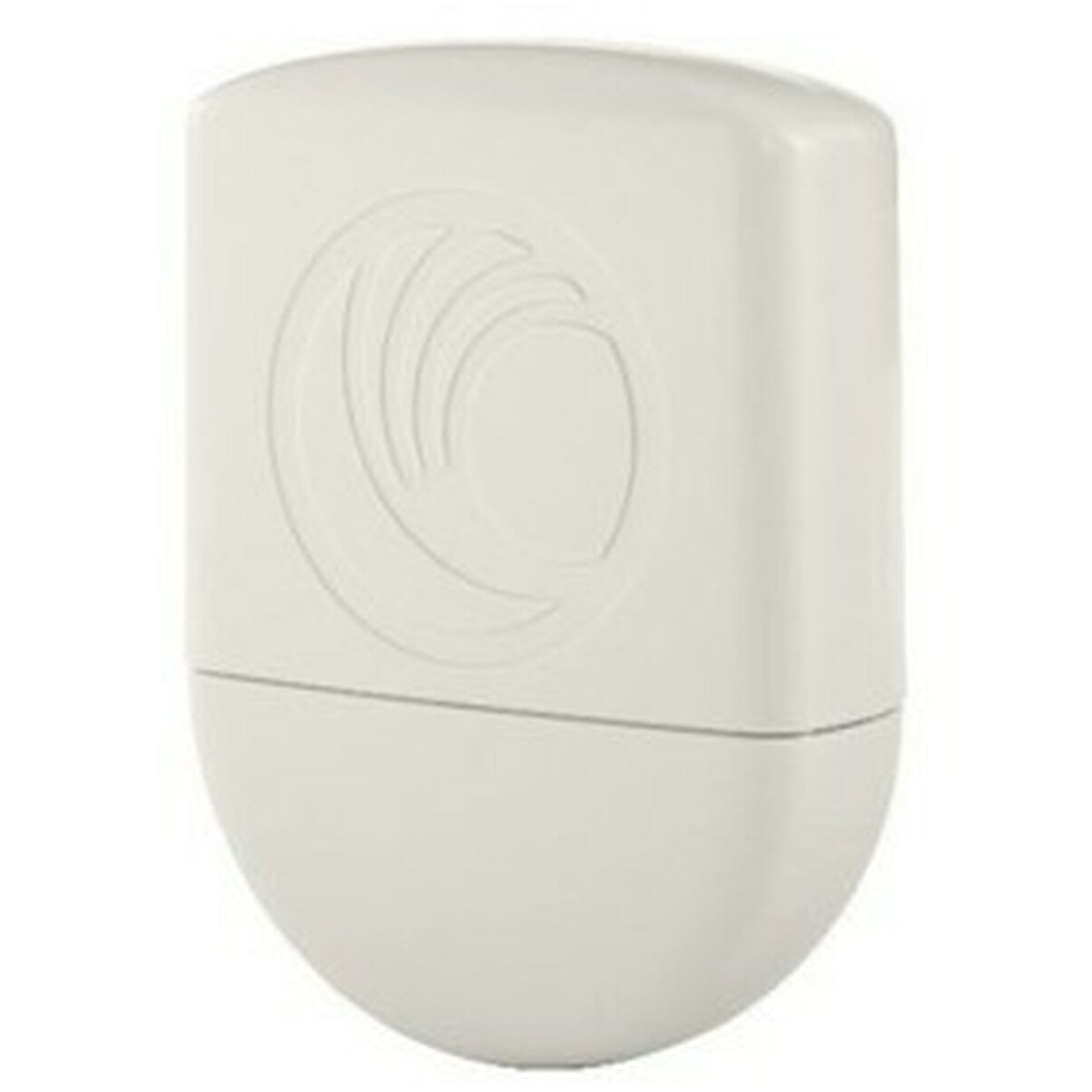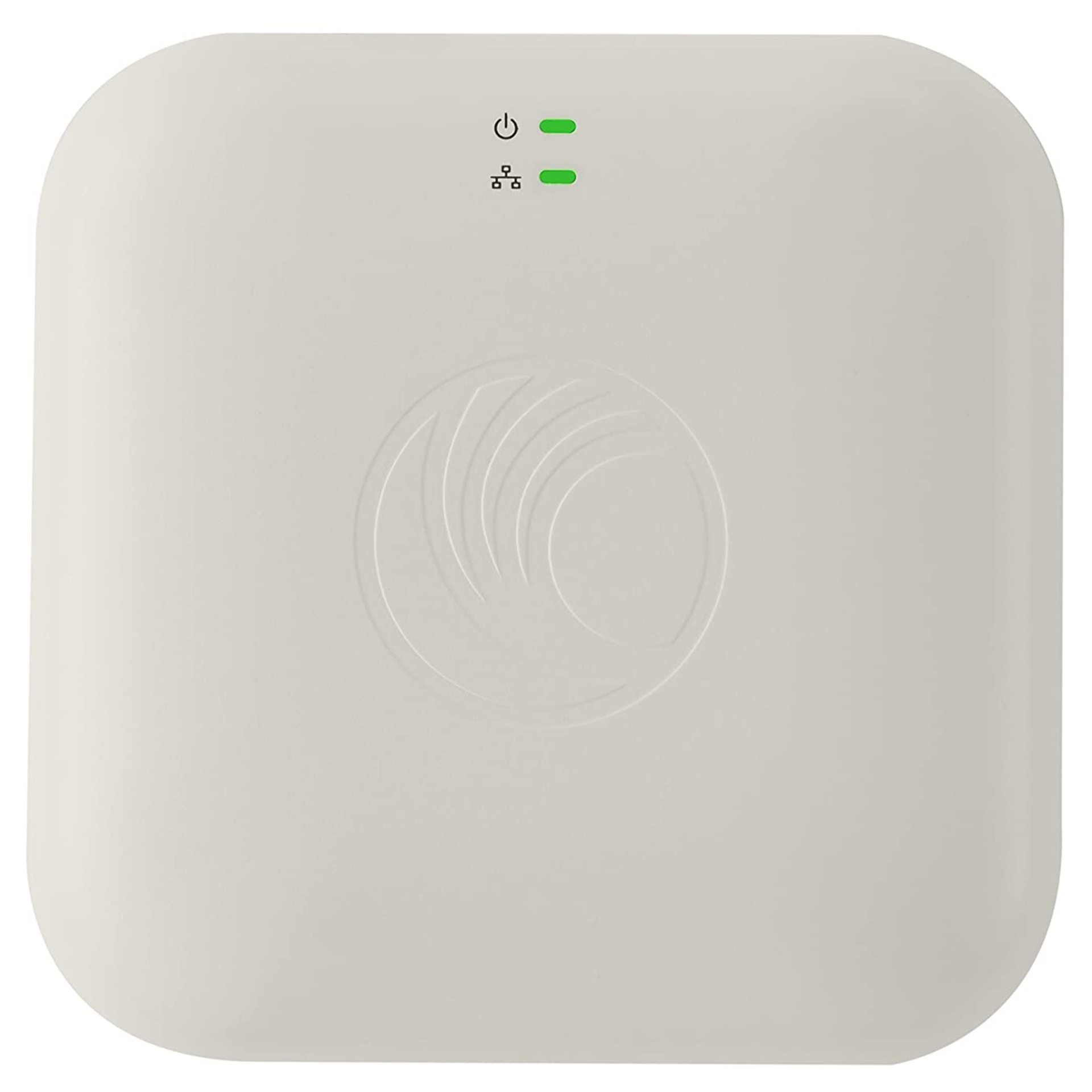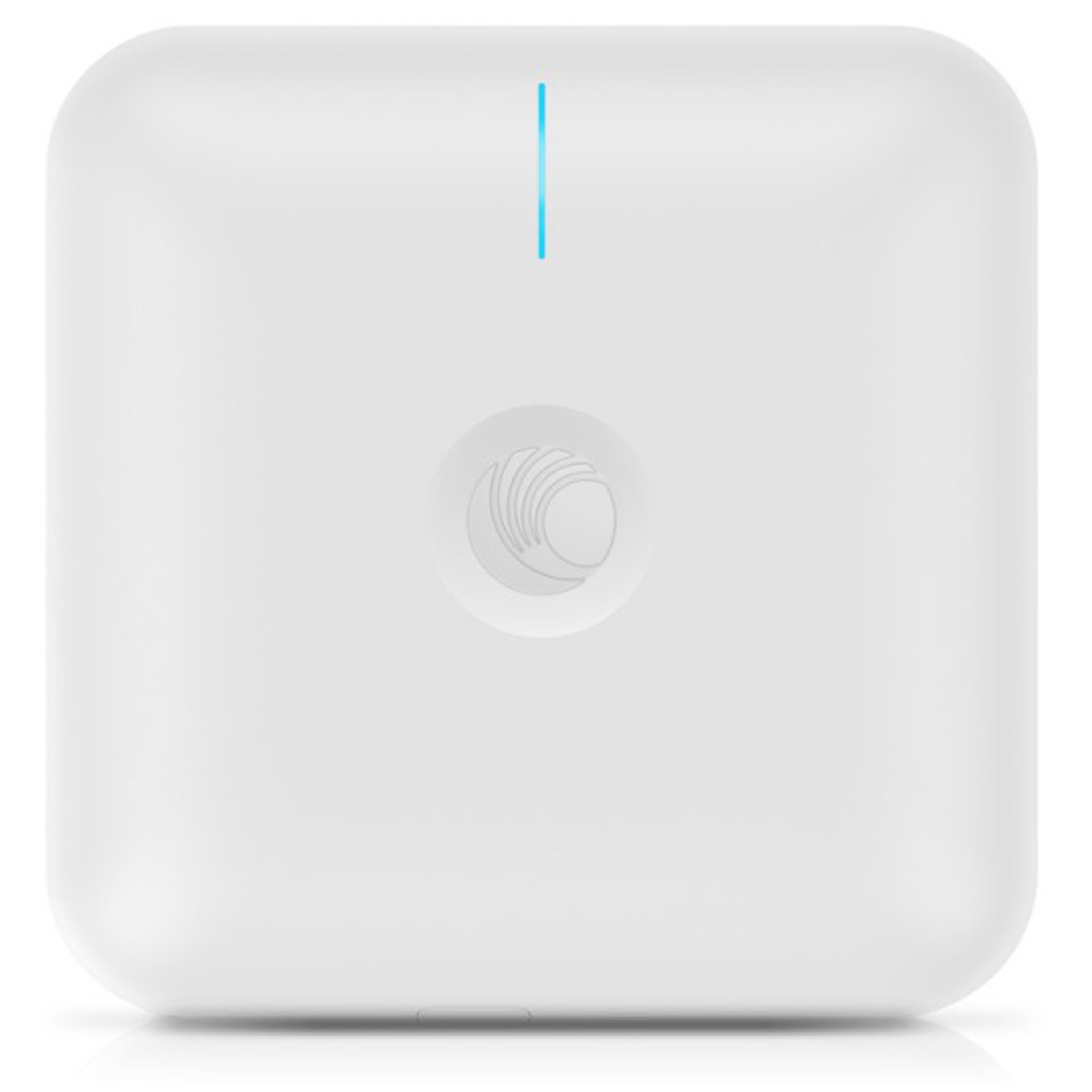- Call Us: +971 433 83 178 |
- Email Us: sales@cyberlegend.ae
ARUBA 320 SERIES
Aruba 320 Series wireless access point delivers best-in-class Wi-Fi connectivity and user experience. It supports multi user MIMO and 4 spatial access point streams to provide concurrent data transmission, maximizing data throughput and improving network efficiency. The access point features the ClientMatch technology and integrated blue tooth capabilities. The integrated wireless intrusion protection offers threat protection and reduce the need for separate security devices. Aruba 320 series wireless access point enables the highest capacity performance and efficiency in high density environments.
Features
ClientMatch technology
Wireless intrusion protection
Intelligent power monitoring
Integrated wireless intrusion protection
Comprehensive protection against advanced online threats
Description
Overview
These Wave 2 access points deliver multi-user MIMO (MU-MIMO) aware ClientMatch to boost network efficiency and support the growing device density demands on your network.
Starting with the 320 series, Aruba access points have an integrated BLE Beacon to remotely manage battery-powered Aruba Beacons.
AP-320 SERIES SPECIFICATIONS
AP-325 and IAP-325
5 GHz (1,733 Mbps max rate) and 2.4 GHz (600 Mbps max rate) radios, each with 4×4 MIMO support and a total of eight integrated omni-directional downtilt antennas.
AP-324 and IAP-324
5 GHz (1,733 Mbps max rate) and 2.4 GHz (600 Mbps max rate) radios, each with 4×4 MIMO support and a total of four combined, diplexed (dual-band) external RP-SMA antenna connectors.
WIRELESS RADIO SPECIFICATIONS
AP type: Indoor, dual radio, 5 GHz 802.11ac and 2.4 GHz 802.11n 4×4 MIMO.
Software-configurable dual radio supports 5 GHz (Radio 0) and 2.4 GHz (Radio 1).
Four spatial stream SU-MIMO for up to 1,733 Mbps wireless data rate to a single client device.
Three spatial stream MU-MIMO for up to 1,300 Mbps wireless data rate to up to three MU-MIMO capable client devices simultaneously.
Support for up to 256 associated client devices per radio, and up to 16 BSSIDs per radio.
Supported frequency bands (country-specific restrictions apply):
2.400 to 2.4835 GHz
5.150 to 5.250 GHz
5.250 to 5.350 GHz
5.470 to 5.725 GHz
5.725 to 5.850 GHz
Available channels: Dependent on configured regulatory domain.
Dynamic frequency selection (DFS) optimizes the use of available RF spectrum.
Supported radio technologies:
802.11b: Direct-sequence spread-spectrum (DSSS)
802.11a/g/n/ac: Orthogonal frequency-division multiplexing (OFDM)
Supported modulation types:
802.11b: BPSK, QPSK, CCK
802.11a/g/n/ac: BPSK, QPSK, 16-QAM, 64-QAM, 256-QAM
Transmit power: Configurable in increments of 0.5 dBm
Maximum (aggregate, conducted total) transmit power (limited by local regulatory requirements):
2.4 GHz band: +24 dBm (18 dBm per chain)
5 GHz band: +24 dBm (18 dBm per chain)
Note: conducted transmit power levels exclude antenna gain. For total (EIRP) transmit power, add antenna gain
Advanced Cellular Coexistence (ACC) minimizes interference from cellular networks.
Maximum ratio combining (MRC) for improved receiver performance.
Cyclic delay/shift diversity (CDD/CSD) for improved downlink RF performance.
Short guard interval for 20-MHz, 40-MHz and 80-MHz channels.
Space-time block coding (STBC) for increased range and improved reception.
Low-density parity check (LDPC) for high-efficiency error correction and increased throughput.
Transmit beamforming (TxBF) for increased signal reliability and range.
Supported data rates (Mbps):
802.11b: 1, 2, 5.5, 11
802.11a/g: 6, 9, 12, 18, 24, 36, 48, 54
802.11n: 6.5 to 450 (MCS0 to MCS23)
802.11ac: 6.5 to 1,733 (MCS0 to MCS9, NSS = 1 to 4)
802.11n high-throughput (HT) support: HT 20/40
802.11ac very high throughput (VHT) support: VHT 20/40/80
802.11n/ac packet aggregation: A-MPDU, A-MSDU
POWER
Maximum (worst-case) power consumption: 20W (802.3at PoE), 13.5W (802.3af PoE) or 18.5W (DC)
Excludes power consumed by external USB device (and internal overhead); this could add up to 6W (POE) or 5.5W (DC) for 5W/1A USB device
Maximum (worst-case) power consumption in idle mode: 8W (PoE) or 7W (DC).
Direct DC source: 48Vdc nominal, +/- 5%.
Power over Ethernet (PoE): 12 Vdc (nominal) 802.3af/802.3at compliant source
Unrestricted functionality with 802.3at PoE
Power-save mode with reduced functionality from 802.3af PoE
USB port disabled
Second Ethernet port disabled
2.4 GHz radio in 1×1:1 mode
Power sources sold separately
When both power sources are available, DC power takes priority
WI-FI ANTENNAS
AP-324/IAP-324:
Four RP-SMA connectors for external dual band antennas. Internal loss between radio interface and external antenna connectors (due to diplexing circuitry): 2.5 dB in 2.4 GHz and 1.5 dB in 5 GHz.
AP-325/IAP-325:
Eight integrated downtilt omni-directional antennas for 4×4 MIMO with maximum antenna gain of 4.0 dBi in 2.4 GHz and 4.7 dBi in 5 GHz. Built-in antennas are optimized for horizontal ceiling-mounted orientation of the AP. The downtilt angle for maximum gain is ~ 30 degrees. Combining the patterns of each of the antennas of the MIMO radios, the peak gain of the effective per-antenna pattern is 2.7dBi in 2.4GHz and 2.9dBi in 5GHz.
OTHER INTERFACES
Two 10/100/1000BASE-T Ethernet network interfaces (RJ-45)
Auto-sensing link speed and MDI/MDX
Load balancing support to achieve platform throughput greater than 1 Gbps
802.3az Energy Efficient Ethernet (EEE)
PoE-PD: 48 Vdc (nominal) 802.3af or 802.3at PoE
DC power interface, accepts 2.1/5.5-mm center-positive circular plug with 9.5-mm length
USB 2.0 host interface (Type A connector)
Bluetooth Low Energy (BLE) radio
Up to 4dBm transmit power (class 2) and -94dBm receive sensitivity
Integrated antenna, -5dBi gain (30 degree downtilt)
Can be disabled with configuration
Visual indicators (tri-color LEDs): For system and radio status
Reset button: Factory reset (during device power up)
Serial console interface (RJ-45)
Kensington security slot

